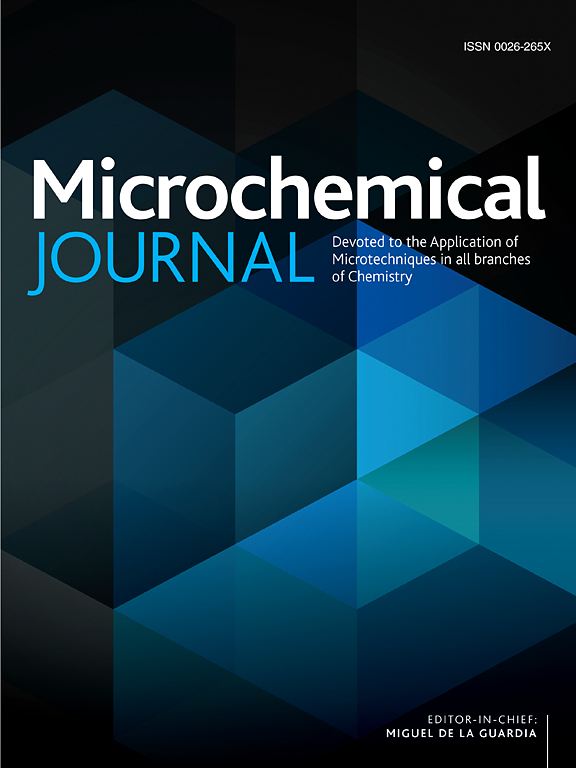Research advances in chemical sensing of p-Aminophenol: A review
IF 4.9
2区 化学
Q1 CHEMISTRY, ANALYTICAL
引用次数: 0
Abstract
p-Aminophenol (PAP) is a phenolic compound commonly used in industrial production and drug synthesis. Detecting PAP in trace amounts is particularly important, because PAP can pollute the environment, affect the growth and development of aquatic organisms, and is harmful to human beings because of its nephrotoxicity, hepatotoxicity, and teratogenicity. This paper reviews the research progress of Electrochemical (EC), Colorimetric (CM) and Photoelectrochemical (PEC) sensors for the detection of PAP in recent years. Among them, EC sensing utilizes high conductivity nanoparticles and synthetic nanomaterials to amplify PAP signals synergistically, providing regular pores and active sites, and achieving microdetection. The prepared sensors have demonstrated excellent performance, reaching a limit of detection (LOD) at the nM level. Colorimetric sensing combines electrochemical methods and colorimetric analysis, widely applicable to the sensitive detection of PAP and other fields. Photoelectrochemical sensing utilizes the photocurrent generated by electron-hole pairs to achieve the concentration detection of PAP. A comparison of the performance of these three chemical sensors revealed that PEC has a lower LOD and higher sensitivity for rapid on-site detection. There are not many studies on PEC at present, and there is a broader research prospect and development space in the future. Reviewing the detection research of PAP in recent years can provide ideas and guidance programs for the development and research of PAP chemical sensors later.

求助全文
约1分钟内获得全文
求助全文
来源期刊

Microchemical Journal
化学-分析化学
CiteScore
8.70
自引率
8.30%
发文量
1131
审稿时长
1.9 months
期刊介绍:
The Microchemical Journal is a peer reviewed journal devoted to all aspects and phases of analytical chemistry and chemical analysis. The Microchemical Journal publishes articles which are at the forefront of modern analytical chemistry and cover innovations in the techniques to the finest possible limits. This includes fundamental aspects, instrumentation, new developments, innovative and novel methods and applications including environmental and clinical field.
Traditional classical analytical methods such as spectrophotometry and titrimetry as well as established instrumentation methods such as flame and graphite furnace atomic absorption spectrometry, gas chromatography, and modified glassy or carbon electrode electrochemical methods will be considered, provided they show significant improvements and novelty compared to the established methods.
 求助内容:
求助内容: 应助结果提醒方式:
应助结果提醒方式:


